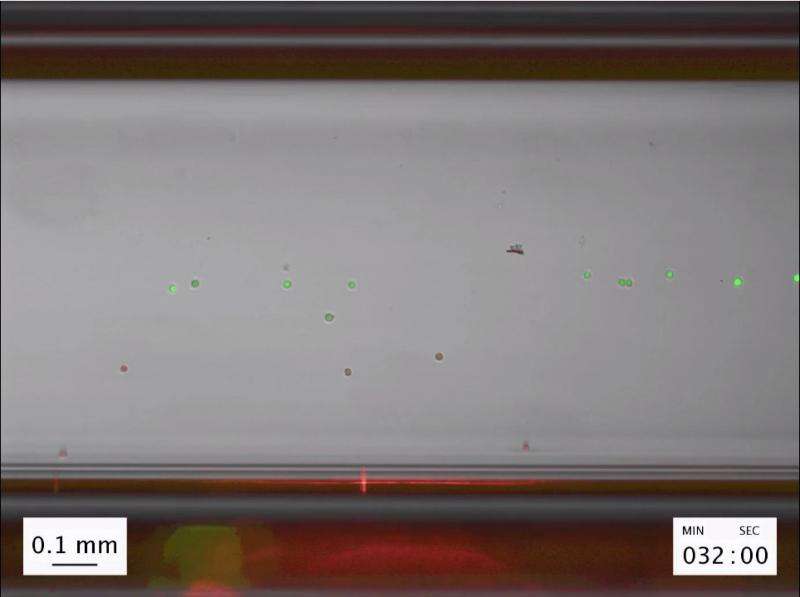Stanford team develops technique to magnetically levitate single cells

Remember the levitating frog? That feat—the levitation of a live frog using a powerful magnet—was awarded the 2000 Ig Nobel Prize. Fascinating to watch, the demonstration also cemented a longstanding belief that levitating anything smaller than 20 microns was flat-out impossible. Much less something alive.
Not so, a team of Stanford-based researchers showed in a paper published today in the Proceedings of the National Academy of Sciences (PNAS). Using a 2-inch-long device made of two magnets affixed with plastic, the team showed it's possible to levitate individual cells.
Researchers studied the technique in a population of breast cancer cells. Originally, the cells hover, suspended between the two magnets. But when exposed to an acid, they start to die and fall as their density increases.
"It has very broad implications in multiple diseases including cancer, especially for point-of-care applications where it can bring the central lab diagnostics to the comfort of patients' homes or physicians' office," Utkan Demirci, PhD, a co-senior author and associate professor of radiology, told me.
The technique makes it possible to distinguish healthy cells from cancerous cells, monitor the real-time response of bacteria or yeast to drugs and distinguish other differences between cells that were thought to be homogenous, said Naside Gozde Durmus, PhD, a postdoctoral research fellow and first author of the paper.
Critically, the technique does not require treating the cells with antibodies or other markers, Durmus said. That ensures the cells are not altered by any treatments and makes the technique easy to use in a variety of settings, including potentially in physicians' offices or in resource-poor settings.
The device works by balancing the gravitational mass of a cell against its inherent magnetic signature, which is negligible when compared with the cell's density, Durmus said.
Interestingly, however, the cells—or bacteria treated with an antibiotic—do not die at the same rate, providing hints at their individual adaptations to environmental stressors, said co-senior author Lars Steinmetz, PhD, a professor of genetics.
To enhance the precision of the technique, the researchers can tweak the concentration of the solution that holds the cells, Durmus said. A highly concentrated solution allows for the differentiation of cells of similar densities, while a less concentrated solution can be used to examine a population of heterogeneous cells.
The team plans to investigate the applications of the device next, including its use in resource-poor settings where the cells can be observed using only a lens attached to an iPhone, Durmus said.
More information: Magnetic levitation of single cells, PNAS, Naside Gozde Durmus, DOI: 10.1073/pnas.1509250112
Journal information: Proceedings of the National Academy of Sciences
Provided by Stanford University




















